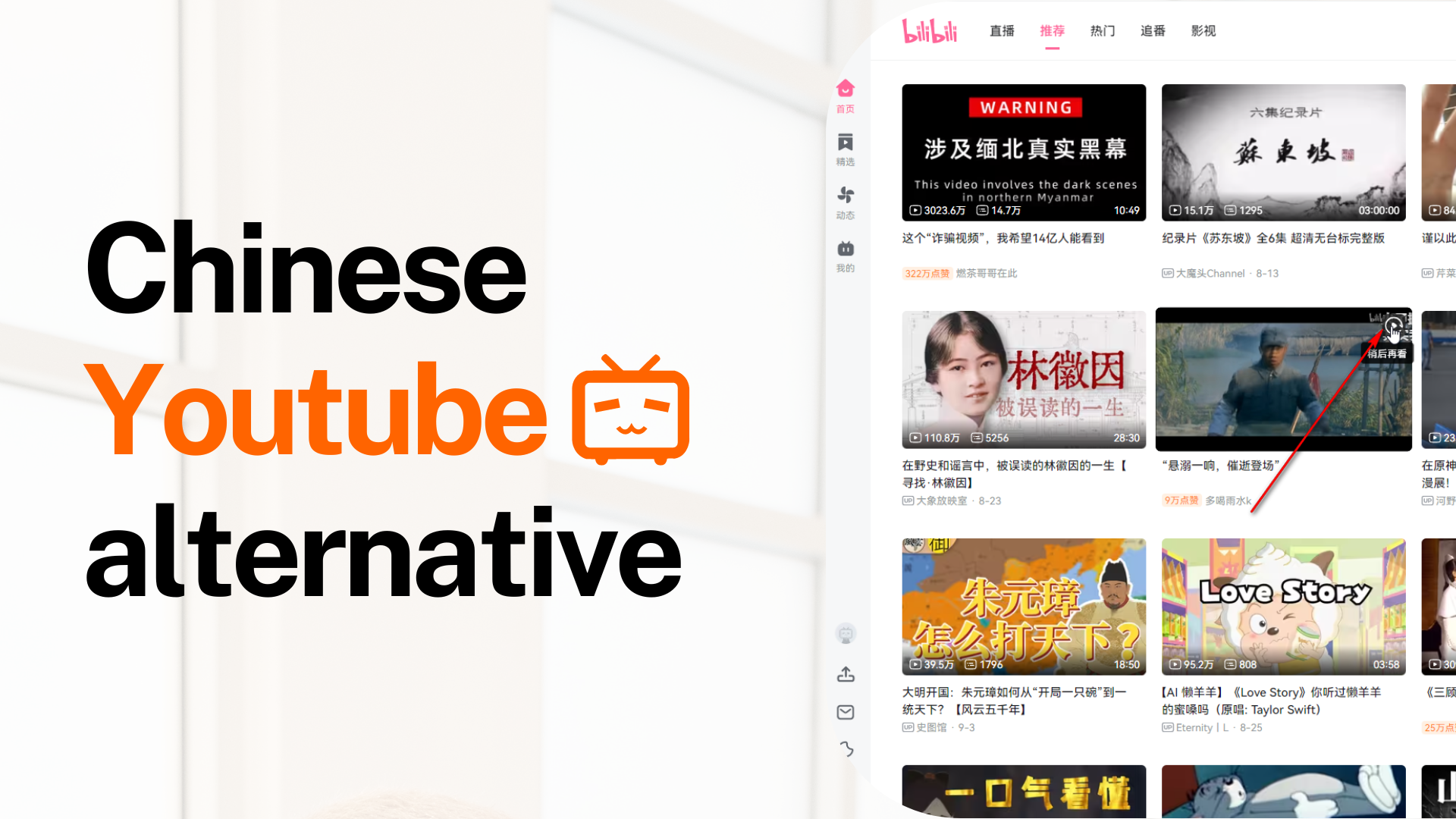InfluChina represents a tailored technique to influencer marketing within the Chinese market, prioritizing cultural aptness and data-driven methodologies to successfully engage the nation's extensive social networks user base.
Comprehending the varied categories of Chinese influencers, consisting of mega influencers who provide broad direct exposure and micro influencers who deal with specific niche audiences, makes it possible for brand names to design exact strategies that cultivate engagement and drive conversions.
Successful campaign execution necessitates careful factor to consider of group elements, material production, and budget plan assignment. A thoroughly crafted InfluChina method has the possible to reinforce brand name exposure, trustworthiness, and return on financial investment (ROI)
Digging into the intricacies of China's influencer landscape empowers brands to discover opportunities for optimizing their marketing undertakings and protecting long-term success.
Secret Takeaways
InfluChina empowers companies to efficiently engage Chinese customers through culturally nuanced influencer marketing methods, fostering brand reliability and trust by partnering with Chinese KOLs (Secret Viewpoint Leaders) A custom influencer approach, lined up with distinct service objectives, is essential for success in the Chinese market. To optimize campaign strategy, comprehending the varied spectrum of Chinese influencer types - including mega, macro, medium, and micro influencers - is important. By leveraging data-driven insights and exact classification, organizations can take full advantage of outcomes and improve influencer marketing budgets in China, ultimately boosting their brand's regional track record and resonance.
Reaching Chinese Customers Effectively
Reaching Chinese customers demands a culturally attuned method, leveraging influencer marketing as a pivotal channel for item promo in China.
By harnessing digital engagement methods, brands can establish meaningful connections with this diverse population, asserted on the principle that cultural significance is an important part of effective influencer marketing.
Chinese consumers show a tendency for engaging with material that resonates with their interests and values. Data-driven insights highlight the significance of partnering with Key Viewpoint Leaders (KOLs) who possess an in-depth understanding of regional nuances, consequently enhancing brand name credibility and trust.
Accepting influencer marketing makes it possible for brands to navigate the detailed Chinese market effectively, yielding significant returns on financial investment. This technique facilitates the revamping of sales techniques, guaranteeing brands can flourish in China's distinct digital landscape.
Structure Boosted Brand Presence
Developing a robust online existence is essential for brand names in China, where approximately 850 million customers actively engage on social media. To develop improved brand exposure, leveraging prominent Secret Opinion Leaders (KOLs) on popular Chinese socials media is necessary. Reliable partnerships with KOLs can substantially increase brand awareness and amplify market existence.
Embracing data-driven strategies enables brands to select optimum platforms, such as Xiaohongshu and Douyin, and recognize appropriate influencers for partnership. Tailoring approaches to specific audience needs assists in genuine connections, eventually driving business growth in the Chinese market.
By prioritizing cultural credibility, brand storytelling, and nuanced understanding of local choices, brands can make the most of audience connection and foster long-lasting loyalty.
Comprehending Chinese Influencer Types
In China's elaborate social networks landscape, categorizing influencers is an important action in making sure campaign efficiency, as differing degrees of impact and audience engagement significantly effect results. Comprehending Chinese influencer types is vital for targeted marketing techniques.
Mega influencers, with 500,000 to 1 million followers, focus on direct exposure, while macro influencers, with 100,000 to 500,000 fans, drive branding and conversion. Medium influencers, having 10,000 to 100,000 followers, cultivate trust and stimulate conversion. Micro influencers, with 1,000 to 10,000 fans, permeate specific niche markets. Secret Viewpoint Leaders (KOLs) differ from conventional influencers as field professionals, providing genuine brand endorsements.
Efficient influencer marketing needs cultural sensitivity, brand authenticity, and strategic platform choice. By leveraging the ideal influencer type, brands can optimize audience engagement, drive conversions, and establish a strong market presence in China.
Accurate influencer categorization allows customized marketing techniques, making sure ideal project outcomes. This nuanced understanding of Chinese influencer types cultivates notified marketing decisions, ultimately driving service success in China's dynamic market.
Developing Custom-made Influencer Techniques
Establishing a reliable influencer technique in China requires a tailored approach that aligns with a brand name's special service goals and resonates with the target audience.
Comprehending the demographics and preferences of Chinese consumers is crucial, as they are highly active on social media platforms, with 70% of online users under the age of 35.
To mesmerize this market, content creation ought to focus on interactive and immersive experiences that foster engagement and drive conversions.
Partnering with influencers who have a strong following within the target market can considerably improve brand name awareness and trustworthiness.
By leveraging platforms like Xiaohongshu and Douyin, brands can make sure optimal audience connection, magnify their presence in the market, and eventually drive company growth.

A well-crafted influencer method can mitigate the threats connected with influencer marketing, such as brand reputation damage, and provide a quantifiable return on financial investment.
Navigating Influencer Marketing Costs
Navigating Influencer Marketing Expenses in China
Developing an effective influencer technique in China needs factor to consider of the monetary implications of partnering with Key Viewpoint Leaders (KOLs) Project budgeting is crucial to guarantee that influencer compensation aligns with organization objectives.
Key Cost Considerations
- Influencer Rates: Vary by niche, audience size, and material complexity, with mega influencers commanding greater rates, up to $10,000 per post.
- Micro-influencers, nevertheless, may charge lower rates, offering a more cost-efficient choice.
- Content Production Costs: Extra costs for top quality material, such as video production or photography, can substantially affect project budgeting.
- Project Period: Longer projects need more budget allotment for continual influencer partnerships, emphasizing the value of careful planning and budgeting.
- Performance Metrics: Tracking engagement rates, conversions, and ROI is necessary to optimize future project budgeting and influencer compensation, guaranteeing a data-driven method to influencer marketing.
Enhancing Campaign Budgeting
To guarantee reliable campaign budgeting, brand names must thoroughly think about these crucial expense factors, focusing on openness and clear communication with KOLs.
Regularly Asked Questions
What Is the Common Duration of an Influencer Marketing Project in China?
In China, influencer marketing campaigns usually span 2-6 months, contingent upon the project's goals and preparation.
Short-term campaigns, often 1-2 months, focus on product launches or promotions, generating buzz and driving sales.
Conversely, longer-term projects, usually 4-6 months, prioritize audience engagement and brand awareness, fostering commitment and advocacy.
Data analysis suggests that 3-month campaigns yield optimal outcomes, enabling sufficient audience engagement, content creation, and project optimization.
Effective project preparation is important, ensuring a strong online existence, maximizing return on financial investment, and lining up with the brand name's overall marketing strategy.
How Do I Determine the Success of an Influencer Marketing Project?
Determining the success of an influencer marketing project needs a multifaceted technique that includes different essential performance indicators (KPIs) and metrics. To accurately evaluate project effectiveness, track engagement rates, reach, and conversions, as these metrics offer insight into audience interaction and involvement.
Conduct an extensive roi (ROI) analysis to examine the project's monetary impact and identify its general value. Keeping track of site traffic and social networks fan development assists recognize the project's influence on brand name awareness and online existence.
Analyzing hashtag efficiency supplies a much have a peek here deeper understanding of the campaign's reach and resonance with the target audience. Leverage data analytics tools to evaluate the campaign's efficiency, determine areas for enhancement, and notify data-driven choices for future optimizations.
Regularly reviewing campaign metrics ensures a high roi, notifies strategic improvements, and makes it possible for adaptive project management. By adopting a data-driven method, online marketers can fine-tune their influencer marketing methods, boost campaign efficiency, and optimize the overall effect of their marketing efforts.
Can I Deal With Influencers Beyond the Significant Chinese Social Media Platforms?
Collaborating with influencers beyond major Chinese social media platforms can be an effective strategy for brands. By exploring niche forums, specialized blog sites, and emerging social media apps, brands can use target market segments and increase their influencer marketing ROI.
Micro influencers on these alternative platforms frequently have actually extremely engaged audiences, providing an unique opportunity for brand names to broaden their reach.
A data-driven technique is vital in determining ideal platforms and influencers, making sure that the collaboration aligns with the brand's goals and target market. By leveraging alternative platforms, brand names can diversify their influencer marketing strategy, lowering dependence on significant social media platforms and increasing their total marketing effectiveness.
This technique likewise enables brand names to connect with audiences in a more meaningful and nuanced method, fostering brand name awareness and loyalty.
What Kind of Material Do Chinese Influencers Normally Create for Brand Names?
Chinese influencers produce multifaceted content for brand names, including sponsored posts, item evaluations, tutorials, and interactive livestreams that foster audience engagement through Q&A sessions and giveaways .
By leveraging short-form videos, article, and social networks stories, influencers customize their content to their unique tone and design, promoting brand names authentically and keeping audience trust.
This tactical approach drives engagement, enhances conversion rates, and underscores the influencers' dependability and credibility in the Chinese market.
Are There Any Specific Laws or Laws Governing Influencer Marketing in China?
In China, strict policies govern influencer marketing, prioritizing openness and credibility. The regulatory landscape requireds that influencers clearly reveal sponsored content, adhering to the Advertising Law and Cybersecurity Law.
The Marketing Law, reliable given that 2015, forbids deceptive or incorrect advertising, while the Cybersecurity Law, enacted in 2017, concentrates on data defense and online content regulation. Furthermore, the Provisions on the Administration of Web Details Solutions and the Interim Provisions on the Administration of Internet Advertising further reinforce the regulative framework.
Efficient influencer marketing in China requires a thorough understanding of these policies and laws. Brand names should guarantee that influencers clearly label sponsored material, preventing misleading or ambiguous language.
Additionally, influencers must validate the credibility of promoted services or products, avoiding making incorrect claims or misstatements. Non-compliance can result in serious effects, consisting of fines, suspension of social networks accounts, and even prosecution.
As the influencer marketing landscape continues to evolve, regulative compliance stays essential for keeping consumer trust and preventing reputational damage.
Conclusion
Influencer marketing in China empowers businesses to connect with target audiences, develop trust, and drive sales through tailored strategies lined up with particular service goals. Leveraging varied influencer categories and browsing cultural subtleties boosts brand name trustworthiness and visibility. A data-driven approach and affordable techniques are important for successful influencer marketing in China, unlocking growth and expansion chances.
It utilizes conceptual and denotative meaning by exactly conveying the principle of influencer marketing in China. Social meaning is incorporated by acknowledging the function of influencer marketing in establishing trust and reliability. Thematic meaning is kept by focusing on the core concept of influencer marketing in China.
In China, strict policies govern influencer marketing, focusing on openness and credibility. The regulatory landscape requireds that influencers clearly disclose sponsored content, adhering to the Marketing Law and Cybersecurity Law.Influencer marketing in China empowers services to link with target audiences, develop trust, and drive sales through tailored techniques lined up with particular business objectives. Leveraging varied influencer categories and browsing cultural nuances enhances brand name credibility and presence. A data-driven method and affordable strategies are crucial for effective influencer marketing in China, opening growth and expansion opportunities.
 Ross Bagley Then & Now!
Ross Bagley Then & Now! Michael Jordan Then & Now!
Michael Jordan Then & Now! Macaulay Culkin Then & Now!
Macaulay Culkin Then & Now! Monica Lewinsky Then & Now!
Monica Lewinsky Then & Now! Kerri Strug Then & Now!
Kerri Strug Then & Now!